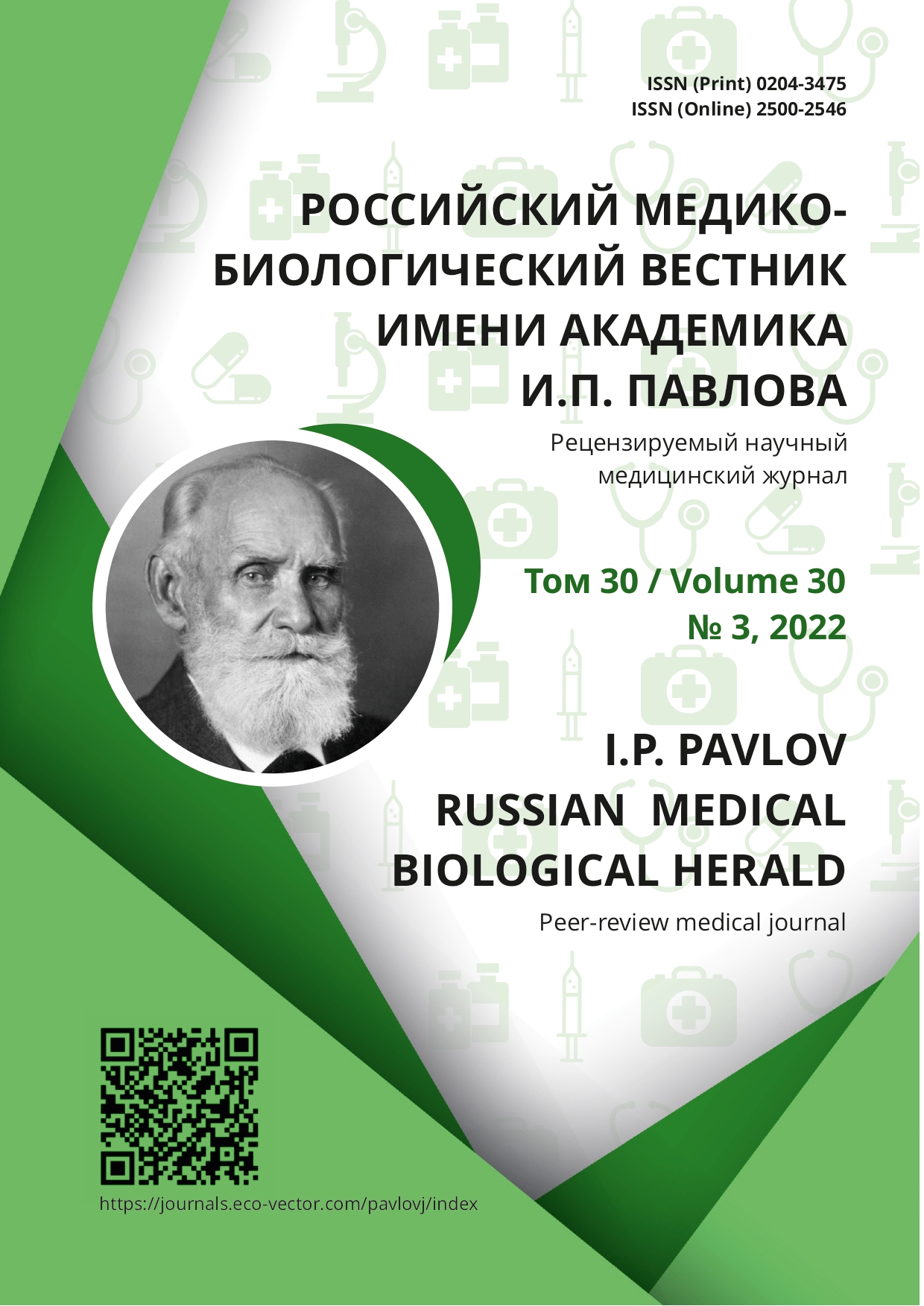Клиническое наблюдение пациента с посттравматической артерио-венозной фистулой бедренных сосудов в нижней трети бедра: особенности патогенеза и сложности ведения
- Авторы: Калинин Р.Е.1, Сучков И.А.1, Шанаев И.Н.1,2, Агапов А.Б.3, Хашумов Р.М.1,2
-
Учреждения:
- Рязанский государственный медицинский университет имени академика И. П. Павлова
- Областной клинический кардиологический диспансер
- Областная клиническая больница
- Выпуск: Том 30, № 3 (2022)
- Страницы: 375-386
- Раздел: Клинические случаи
- Статья получена: 27.02.2022
- Статья одобрена: 11.07.2022
- Статья опубликована: 07.10.2022
- URL: https://journals.eco-vector.com/pavlovj/article/view/102594
- DOI: https://doi.org/10.17816/PAVLOVJ102594
- ID: 102594
Цитировать
Аннотация
Введение. Патологические сообщения между артериальной и венозной системами остаются в центре внимания хирургов с XVIII в. Несмотря на достижения современной медицины, диагностика и лечение артерио-венозных фистул (АВФ) остаётся до сих пор достаточно сложной задачей. Наиболее частой локализацией АВФ являются нижние конечности ― 17%. Особенности строения и клинических проявлений посттравматических АВФ определяют то, что, как правило, они диагностируются спустя несколько лет после травмы. Ошибки в диагностике достигают 30%, а неудовлетворительные результаты оперативного лечения встречаются с частотой от 30 до 70% наблюдений. В статье описывается клиническое наблюдение пациента с редкой посттравматической АВФ в нижней трети бедра, выявленной через 2 года после перелома нижней конечности. Первоначально пациент поступил в стационар для оперативного лечения по поводу варикозной болезни вен левой нижней конечности (С5 по классификации СЕАР). В ходе дообследования в отделении сосудистой хирургии была выявлена посттравматическая АВФ бедренных сосудов в нижней трети бедра с изменениями центральной гемодинамики (по данным ультразвукового исследования сердца). Была предпринята попытка открытого разобщения АВФ, однако морфологические изменения стенок бедренных сосудов вследствие длительно существующей фистулы не позволили этого сделать. В результате потребовалось два этапа эндоваскулярного лечения для эффективного разобщения АВФ.
Заключение. Представленное клиническое наблюдение приведено авторами в связи с редкостью патологии, нетипичными клиническими проявлениями и трудностями диагностики. Это наблюдение интересно также тем, что для эффективного разобщения АВФ потребовалось несколько этапов эндоваскулярного лечения.
Полный текст
Об авторах
Роман Евгеньевич Калинин
Рязанский государственный медицинский университет имени академика И. П. Павлова
Email: kalinin-re@yandex.ru
ORCID iD: 0000-0002-0817-9573
SPIN-код: 5009-2318
Scopus Author ID: 24331764400
ResearcherId: М-1554-2016
д.м.н., профессор
Россия, РязаньИгорь Александрович Сучков
Рязанский государственный медицинский университет имени академика И. П. Павлова
Email: suchkov_med@mail.ru
ORCID iD: 0000-0002-1292-5452
SPIN-код: 6473-8662
Scopus Author ID: 56001271800
ResearcherId: М-1180-2016
д.м.н, профессор
Россия, РязаньИван Николаевич Шанаев
Рязанский государственный медицинский университет имени академика И. П. Павлова; Областной клинический кардиологический диспансер
Автор, ответственный за переписку.
Email: c350@yandex.ru
ORCID iD: 0000-0002-8967-3978
SPIN-код: 5524-6524
Scopus Author ID: 57148451800
ResearcherId: AFL-5770-2022
д.м.н.
Россия, Рязань; РязаньАндрей Борисович Агапов
Областная клиническая больница
Email: agapchik2008@yandex.ru
ORCID iD: 0000-0003-0178-1649
SPIN-код: 2344-5966
к.м.н.
Россия, РязаньРуслан Майрбекович Хашумов
Рязанский государственный медицинский университет имени академика И. П. Павлова; Областной клинический кардиологический диспансер
Email: kardiokt@yandex.ru
ORCID iD: 0000-0002-9900-0363
SPIN-код: 8495-9819
ассистент кафедры сердечно-сосудистой, рентгенэндоваскулярной, оперативной хирургии и лучевой диагностики
Россия, Рязань; РязаньСписок литературы
- Ашер Э. Сосудистая хирургия по Хаймовичу. М.: Бином. Лаборатория знаний; 2010. Т. 2.
- Чернуха Л.М., Никульников П.И., Каширова Е.В., и др. Посттравматические артериовенозные фистулы. Опыт лечения // Новости хирургии. 2011. Т. 19, № 3. С. 63–69.
- Гамбарин Б.Л., Нурмухамедов М.Р. Хирургическое лечение травматических аневризм и артерио-венозных свищей // Медицинский журнал Узбекистана. 1985. № 5. С. 27–29.
- Цыганков В.Н., Францевич А.М., Варава А.Б., и др. Эндоваскулярное лечение посттравматических артериовенозных свищей // Хирургия. Журнал им. Н.И. Пирогова. 2015. № 7. С. 34–40. doi: 10.17116/hirurgia2015734-40
- Комелягин Д.Ю., Дубин С.А., Владимиров Ф.И., и др. Клинический случай лечения пациента с посттравматическим артериовенозным свищом в области шеи // Детская хирургия. 2015. Т. 19, № 5. С. 50–53.
- Цыганков В.Н., Коков Л.С., Дан В.Н., и др. Эндопротезирование поверхностной бедренной артерии по поводу посттравматической артериовенозной фистулы // Диагностическая и интервенционная радиология. 2008. Т. 2, № 3. С. 85–89.
- Кохан Е.П., Митрошин Г.Е., Батрашов В.А., и др. Рентгенэндоваскулярное стентирование (стент-графт) наружной подвздошной артерии для устранения посттравматического артериовенозного соустья // Ангиология и сосудистая хирургия. 2005. Т. 11, № 2. С. 49–52.
- Шор Н.А. К вопросу классификации повреждений магистральных сосудов конечностей // Ортопедия, травматология и протезирование. 2007. № 4. С. 116–118.
- Князев М.Д., Комаров И.А., Киселев В.Я. Ошибки в диагностике и лечении больных с повреждением магистральных кровеносных сосудов // Вестник хирургии им. И.И. Грекова. 1985. Т. 134, № 5. С. 139–141.
- Швальб П.Г., Ухов Ю.И. Патология венозного возврата из нижних конечностей. Рязань: Тигель; 2009.
- Шанаев И.Н. Современные теории патогенеза трофических язв венозной этиологии // Наука молодых (Eruditio Juvenium). 2019. Т. 7, № 4. С. 600–611. doi: 10.23888/HMJ201974600-611
- Сушков С.А., Небылицин Ю.С., Самсонова И.В., и др. Комплексное лечение пациентов с посттромботической болезнью нижних конечностей // Российский медико-биологический вестник имени академика И.П. Павлова. 2016. Т. 24, № 1. C. 75–85. doi: 10.17816/PAVLOVJ2016175-85
- Kalinin R.E., Suchkov I.A., Kaydakova E.Yu., et al. Chronic venous insufficiency as a possible clinical manifestation of a post-traumatic lower limb arteriovenous fistula // Acta Phlebologica. 2021. Vol. 22, № 3. P. 100–104. doi: 10.23736/S1593-232X.21.00496-3
Дополнительные файлы

















